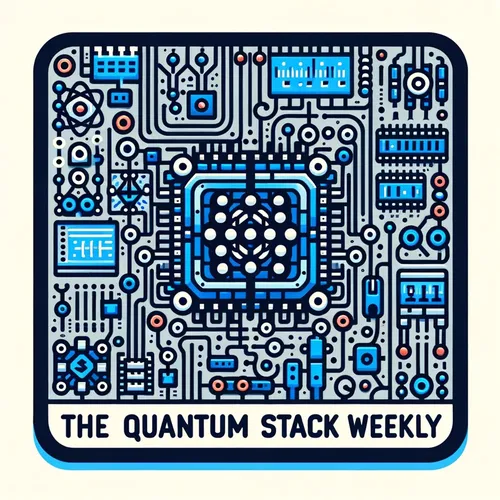Quantum Leap: Millisecond Coherence Shatters Limits, Unleashes Potential
- Author
- Quiet. Please
- Published
- Wed 23 Jul 2025
- Episode Link
- https://www.spreaker.com/episode/quantum-leap-millisecond-coherence-shatters-limits-unleashes-potential--67087204
This is your The Quantum Stack Weekly podcast.
Millisecond qubit coherence. That’s the phrase that’s been echoing in my mind all day, ever since the news broke yesterday from Aalto University in Finland. Imagine, for a moment, you’re standing in a lab—the faint smell of cryogenic coolant in the air, superconducting circuits humming softly under layers of copper shielding, every photon accounted for. Now, picture researchers gathered around a monitor, holding their breath as a transmon qubit’s coherence time is measured, and for the first time, the numbers land not just above half a millisecond but push decisively into the millisecond range. A leap. A threshold crossed.
I’m Leo, your Learning Enhanced Operator, and this is The Quantum Stack Weekly. Today, we’re diving into what may be the most significant real-world quantum computing advancement in months, if not years—a development that might seem esoteric, but which brings us several qubits closer to real-world utility, not just curiosity.
Here’s the story: The Aalto team, led by Mikko Tuokkola, just announced in Nature Communications that their approach to transmon qubits achieved coherence times that not only shatter the old record of 0.6 milliseconds, but do so reliably, with median times at half a millisecond and peaks above that. Coherence time, at its core, is the window in which these delicate quantum states—superpositions, entanglements, all the quantum weirdness—survive before the relentless noise of the outside world decoheres them. With previous limits, we were running quantum algorithms as if racing raindrops down a windowpane—random, fleeting, unpredictable. Now, finally, it’s more like skipping stones on a calm lake: longer distance, more bounces, more meaningful computation.
Why does this matter today? Here’s the parallel: Just as the world is adjusting to headline-grabbing cyber threats and scrambling to deploy post-quantum encryption, the foundation for practical quantum error correction is being poured in real time. Longer coherence means error correction needs less overhead, fewer redundant qubits entangled to defend the calculation, and suddenly, dreams of fault-tolerant architectures—yes, the elusive million-qubit machines, like those proposed by PsiQuantum and others—feel a step less like science fiction.
You might wonder, who benefits? Industries from pharmaceuticals to logistics, financial modeling to secure communications. Picture drug simulations so complex that they dwarf anything seen today, new materials designed by tweaking quantum behavior at the atomic scale, or logistics planners optimizing global supply chains with quantum-powered foresight. That’s what enhanced coherence unlocks.
As Rob Schoelkopf said recently, “We’re starting to hear the music now.” And if this is the overture, I can’t wait for the symphony.
I’m Leo, and if you’re buzzing with questions or have a quantum topic you want unpacked, just send an email to [email protected]. Don’t forget to subscribe to The Quantum Stack Weekly wherever you get your podcasts. This has been a Quiet Please Production. For more, check out quietplease.ai. Until next time, keep your wavefunction uncollapsed and your superpositions strong.
For more http://www.quietplease.ai
Get the best deals https://amzn.to/3ODvOta
